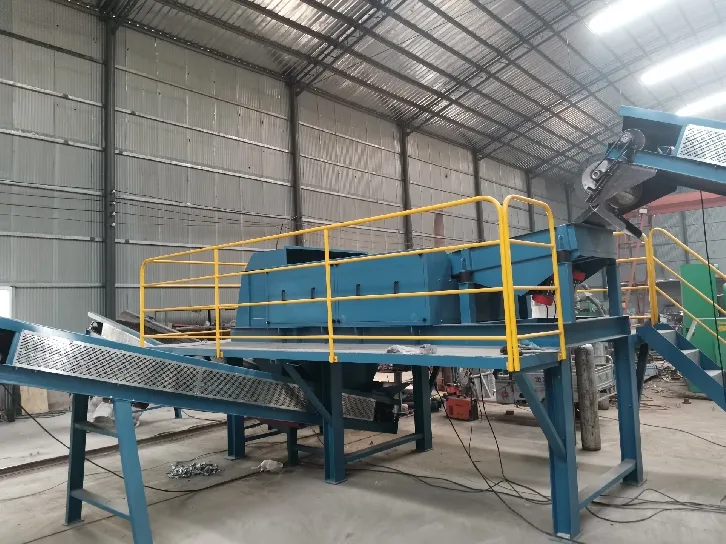

Вер . 10, 2024 16:13 Back to list
Understanding Eddy Current Separators How They Work
Eddy current separators are advanced devices used in recycling processes to separate non-ferrous metals from other materials. They play a significant role in the recovery of valuable metals like aluminum, copper, and brass from products such as scrap metal, electronics, and automotive parts. But how exactly do these separators work? Let’s dive into the principles behind this fascinating technology.
At the heart of the eddy current separator's functionality is Faraday’s law of electromagnetic induction, which states that a changing magnetic field can induce electrical currents in conductive materials. When non-ferrous metals are introduced to an alternating magnetic field, they experience this phenomenon, resulting in the creation of eddy currents within the metals.
The eddy current separator consists of a conveyor belt, a magnetic rotor, and a discharge area. As materials are fed onto the conveyor belt, they pass under the magnetic rotor, which spins at a high velocity. This rotor creates a rapidly alternating magnetic field that interacts with any conductive materials (non-ferrous metals) present on the belt.
When a non-ferrous metallic object passes through the magnetic field generated by the rotor, it induces eddy currents inside the metal. These currents generate their own magnetic fields that oppose the initial field of the rotor, leading to a repulsive effect. Consequently, these metallic objects are propelled upwards and outwards from the conveyor belt towards a designated discharge area, effectively separating them from non-metallic materials and ferrous metals which do not produce such currents.

One of the key advantages of eddy current separators is their ability to efficiently process a wide variety of materials. They are commonly utilized in the recycling industry, especially for the recovery of aluminum cans from mixed waste and for the extraction of metals from electronic waste. Their speed and accuracy in separating valuable metals not only enhance recycling rates but also contribute to significant cost savings and environmental benefits.
Moreover, the separation process is highly adjustable. By changing the rotor's speed and altering the magnetic field strength, operators can fine-tune the separator's performance to target specific types of metals. This adaptability makes eddy current separators compatible with different industrial applications and materials.
Another notable feature of an eddy current separator is its minimal maintenance requirement. Since it primarily relies on the laws of physics and does not involve moving parts interacting directly with the materials being processed, wear and tear are significantly reduced. This reliability makes the technology appealing for companies looking to maximize efficiency and minimize downtime.
In conclusion, eddy current separators are an exceptional tool in the field of recycling and waste management. They leverage the laws of electromagnetic induction to efficiently isolate non-ferrous metals from other materials, thereby facilitating the recovery of valuable resources and contributing to sustainability efforts. With their increasing application in various industries and ongoing technological advancements, eddy current separators will continue to play a vital role in the future of recycling.
Latest news
Troubleshooting Common Eddy Separator Problems
NewsJul.04,2025
The Role of Metal Recycling Plants in Circular Economy
NewsJul.04,2025
The Impact of Recycling Line Pickers on Waste Management Costs
NewsJul.04,2025
Safety Features Every Metal Shredder Should Have
NewsJul.04,2025
How Industrial Shredders Improve Waste Management Systems
NewsJul.04,2025
How Cable Granulators Contribute to Sustainable Recycling
NewsJul.04,2025